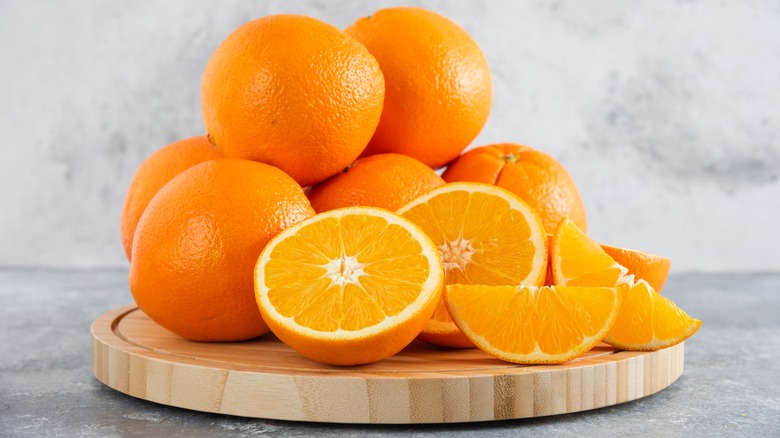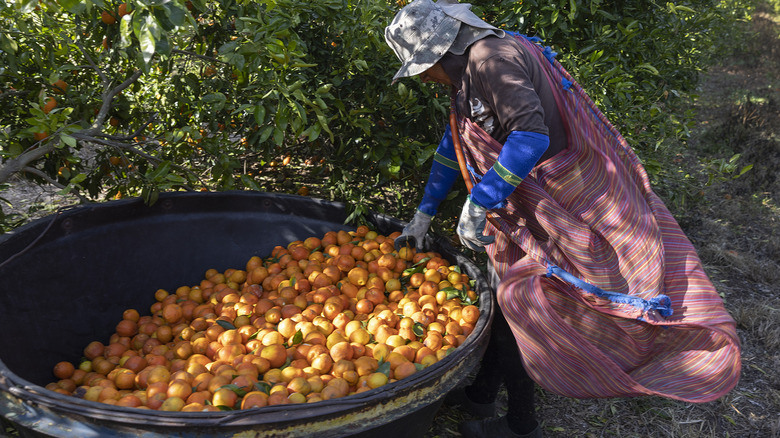Don't Look Now, But Orange Prices Could Be On The Rise
News of everyday foods getting more expensive has been making headlines for over a year, and few things have withstood America's record-high inflation in 2022. The price of eggs, flour, and fats soared last year making baking a more significantly expensive hobby to uptake. Dairy-based items and their non-dairy alternatives both saw a 20% hike in price, instant coffee rose by 13%, and the effect of chicken's rising cost was seen in the world's top fast food chains.
Fresh produce soon followed in the battle against skyrocketing prices albeit for different reasons. Per the Bureau of Labor Statistics, the price of fresh vegetables has increased by 32.6% and fresh fruits by 15.8% in the last year. While the price of most food increasing over the past few years has largely been due to pandemic-related supply chain issues and nationwide inflation, the story of fresh produce getting more expensive is a tad different.
Climate change-induced droughts have affected the leafy greens that grow in Arizona and resulted in losses worth three billion dollars in California last year. On the flip side, storms passing through Florida have cost the state two billion in damages. Unfortunately, Florida's troubles can be felt nationwide. Florida is the top producer of oranges in the U.S. and nearly 90% of the country's orange juice comes from fruits grown in the Sunshine State. As more natural catastrophes affect Florida, their effects on the price of oranges may soon be seen all across the country.
A disease is gradually shortening the supply of oranges
Regular OJ drinkers will have noticed that the price of orange and its juice has been on the rise since 2017 when Florida's orange trees were ravaged by Hurricane Irma. Believe it or not, that wasn't the worst of it. Experts forecast that 2022-2023 will be the worst season for Florida's orange production since 1936, halving the yield from an already small harvest the year before.
When hurricanes and climate changes disrupted Florida's orange production in the past, California came to the forefront to become America's largest orange-supplying state. But a disease that has been plaguing Florida's orange trees for decades now, causing its citrus production to slowly shrink over the years, has now made its way to California's farms too. An incurable disease known as Huanglongbing or citrus greening has been steadily bringing Florida's orange production to a decline. As the disease kills orange trees, the fruits produced from them are so bitter that they are practically inedible. While scientists race to find a solution, the Asian citrus psyllid insect has already carried the fatal disease to California's orange trees.
Where California's farms previously ensured a robust supply of oranges in the U.S. despite the troubles in Florida, citrus greening is now bringing a sharp downward decline to California's orange production as well. The result is a supply shortage that may catapult the price of oranges through the roof before a cure for the disease is found to bring the declining orange production industries of California and Florida back on their feet.

